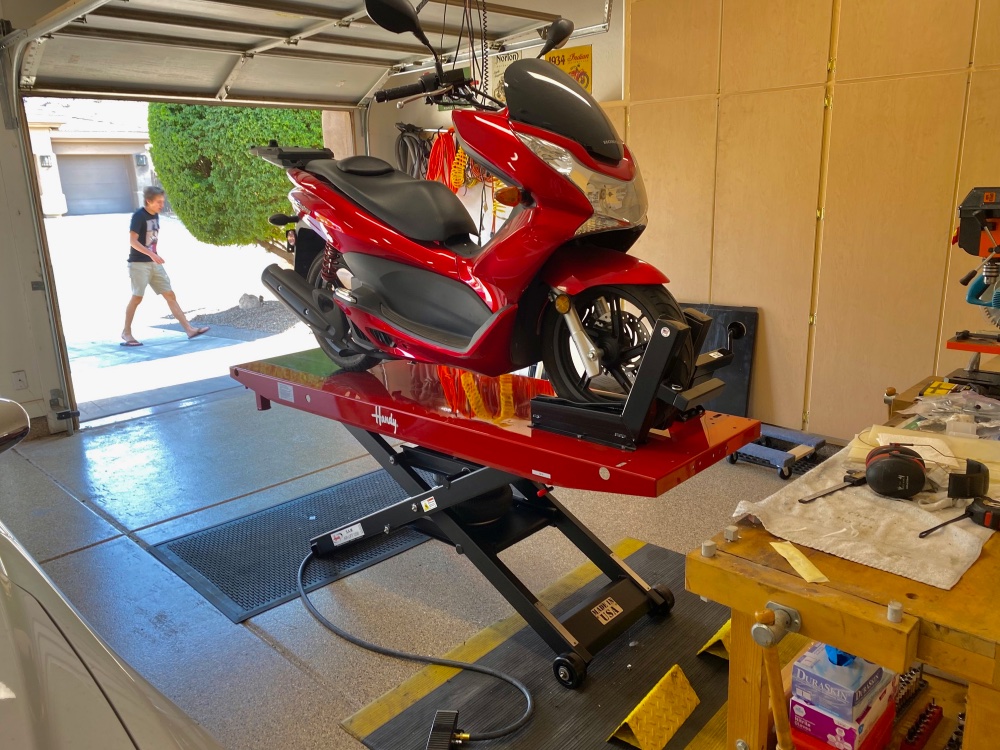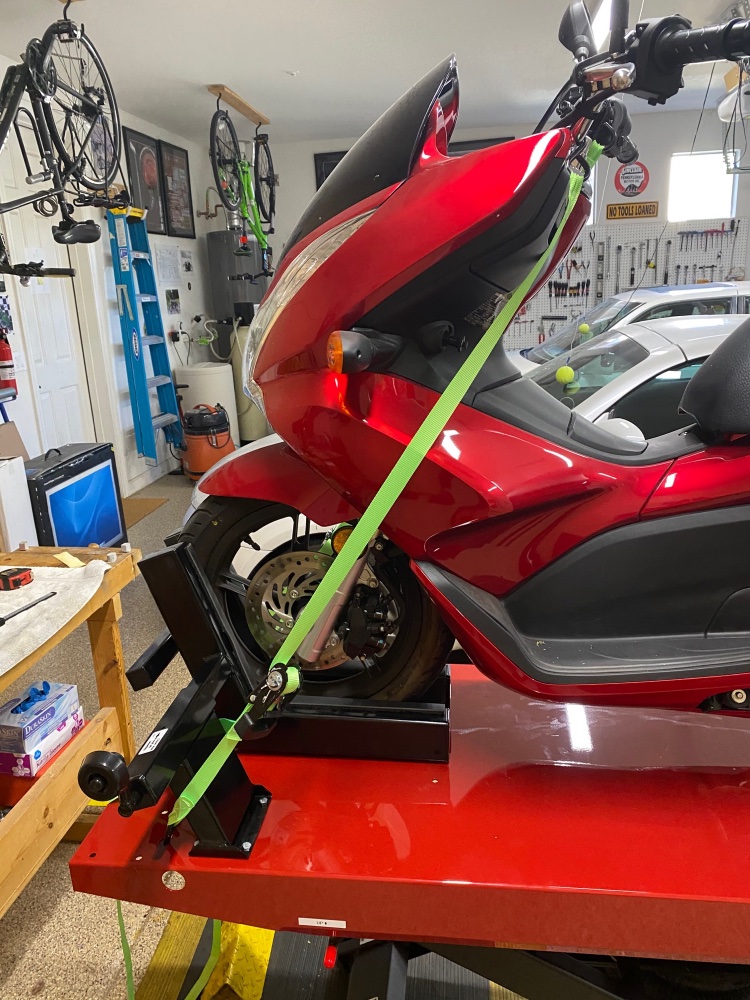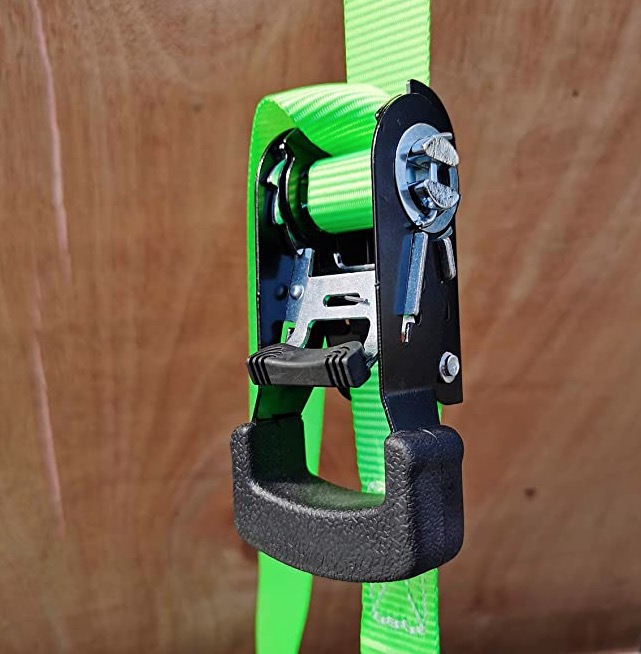Dry run.
Part I appears here.
While dropping my sweet little Honda PCX150 scooter would not make for a fun day, it beats dropping my classic BMW Airhead. Indeed, for anyone contemplating entry into the powered, two wheeled world, it’s hard to think of a better starter machine than the Honda, though you should be warned. This will only lead to bigger things.
So adopting the principle of gradual progression, I decided a dry run, placing the scooter on the Handy lift, made a lot of sense. And the process disclosed some issues.
First, the wretched, mottled epoxy floor in the garage is very slippery. As I tried pushing the scooter up the mounting ramp the whole lift proceeded to slide away. Not good. I placed wheel chocks under the front wheel, but to no avail. The same problem resulted. So I resorted to placing the legs of the lift on rubber mats and that, along with the chocks, did the trick. For added safety I will add some non-slip tape between the rubber mats and the epoxy floor coating.
You have to take a determined run at the ramp to get ‘over the hump’, as it were, and I had earlier measured the right size of a generous opening in the wheel vise to allow easy insertion of the front wheel. Once the wheel is in the vise, the left handlebar grip is held with the right hand and the locking handle on the grip is operated with the left. Pretty easy.

The Honda PCX150 scooter on the lift, here at 30″ height. 39″ is the maximum. The scooter weighs 295lbs.
As the instructions confirm, leaving a motorcycle on a lift without tie downs is unsafe, so to add suspenders to the belt, I attached tie downs. These have a 1500lb. (!) breaking strength, which should do the trick. You do not need much tension on them – just enough to slightly compress the front forks.

The Honda PCX150 scooter tied down – one tie down either side.
A set of four ran me $21 at Amazon. Operation is simple. The loose end of the strap is passed through the jaws of the ratchet and the handle is operated back and forth until the strap is taut. The Handy lift has built-in slots and holes to accommodate the hook on the tie down strap.

The ratchet mechanism on the tie down.
The ratchet release handle is in the center of the image.
To release the tie down strap, the ratchet mechanism has to be fully opened while pulling on the release lever/handle. Keep pulling on the release lever/handle. This disables the ratchet teeth and allows the strap to be pulled out. If the ratchet is not fully opened (flat) the strap cannot be pulled out.
Tomorrow I’ll look at installing my 1975 BMW R90/6 Airhead on the lift, in Part III.
The first task will be to drain the engine oil and remove the sump. After 45 years and 72,000 miles the gasket between the sump and the engine block has started weeping oil (just like a new British bike) and has to be replaced. There are no fewer than 14 retaining bolts (“Ve mek eet zis vey, und you vill like eet zis vey”) and, trust me, you really do not want to do this job without a motorcycle lift.